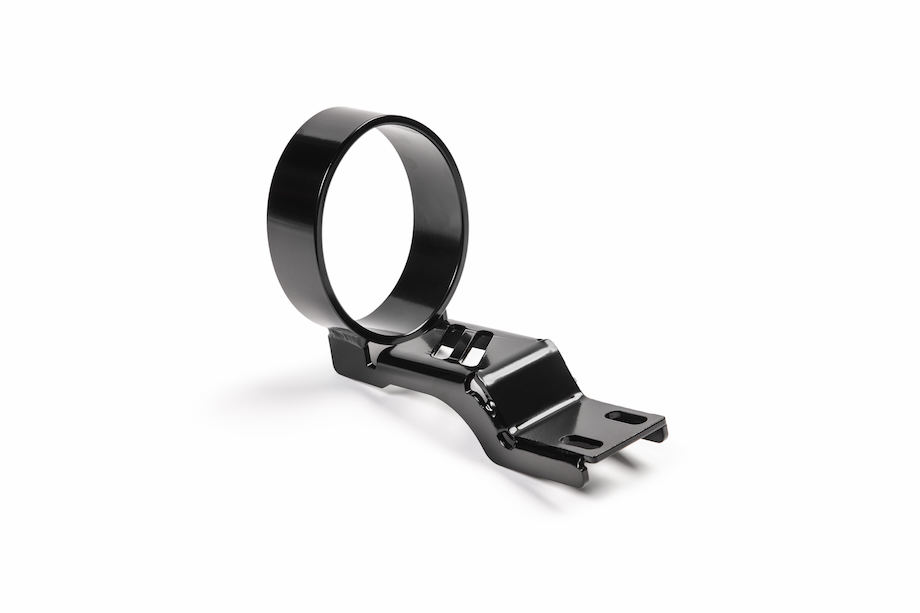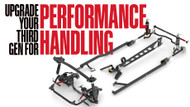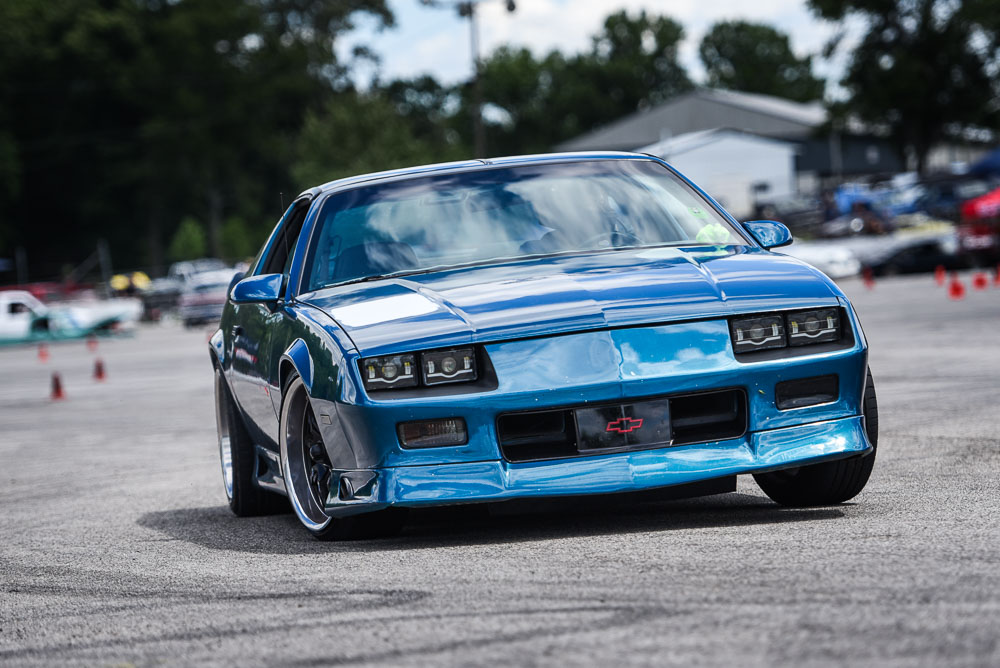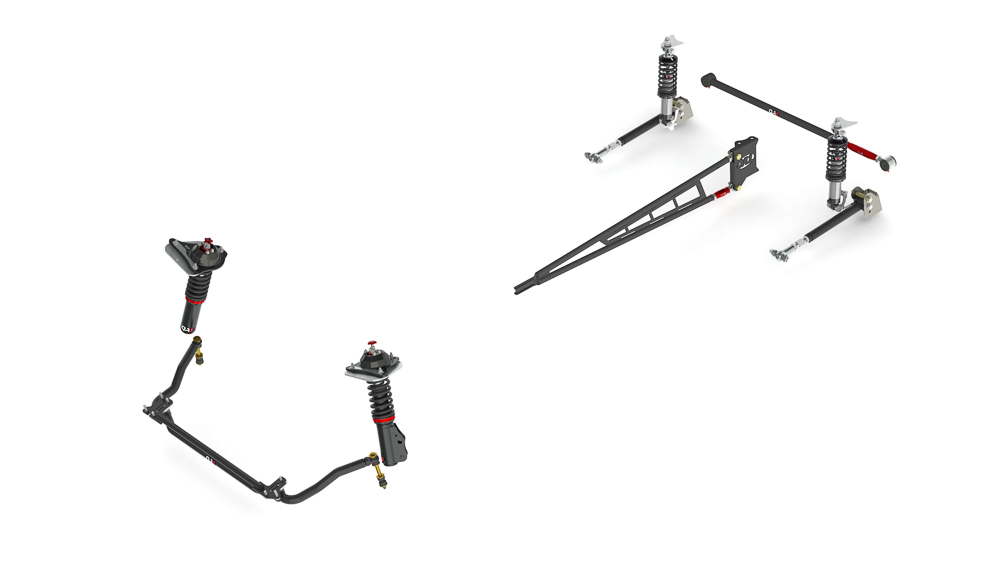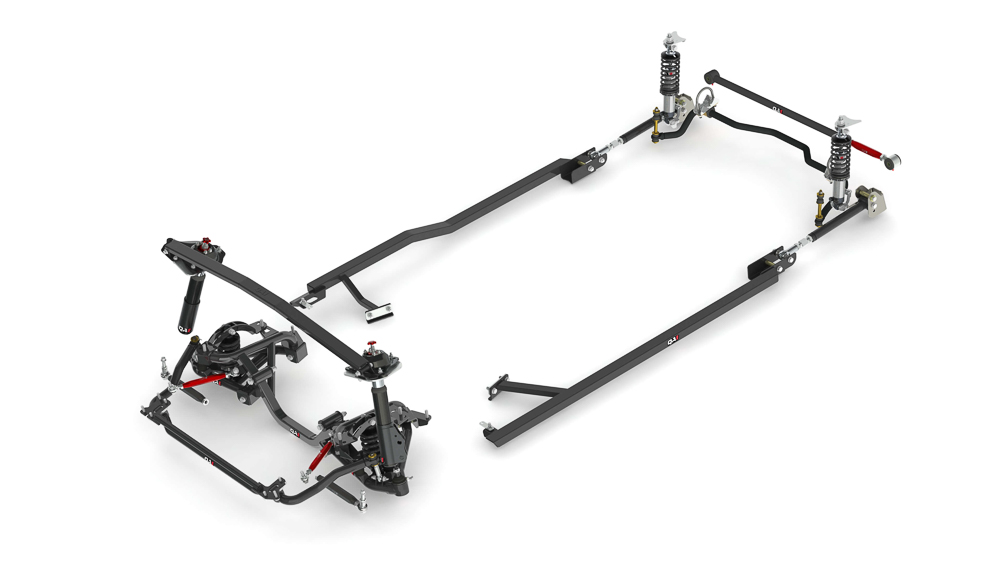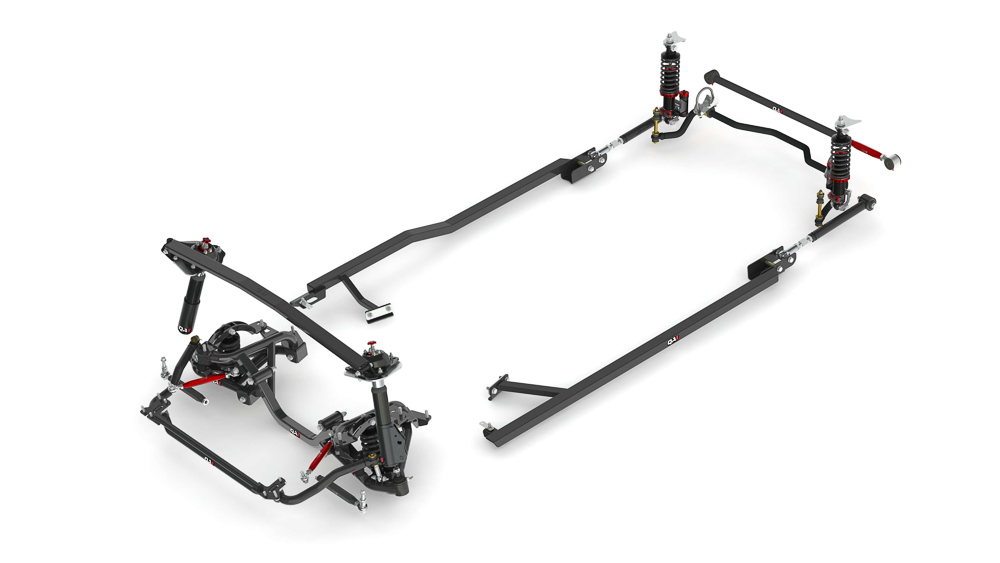Guide To Upgrading A 3rd Gen F Body For Performance Handling
While they don’t yet carry the same level of recognition in the minds of muscle car enthusiasts as their 1960s and ‘70s ancestors, the 3rd gen Chevrolet Camaro and Pontiac Firebird have long held their own among fans of the General’s popular pony car nameplates. Launched in 1982 and manufactured through 1992, the third gen F body was and is a memorable part of the youth of many of today’s generation of enthusiasts and collectors, and now with its youngest editions more than thirty years old, these cars are increasing in demand and value.
In a departure from earlier editions of the Chevrolet Camaro and Pontiac Firebird, the 3rd gen ushered in a fresh redesign of the suspension system, featuring a k-member and a front strut with an independent spring perched in the lower control arm basket, and a transmission tail housing-mounted torque arm and panhard bar combination with coil springs in the rear. This design was a real boon to performance handling, and has long been heralded as a highly capable suspension system for handling and performance driving, so long as the quality of the components are well aligned with the horsepower output and use cases of the vehicle.
QA1’s comprehensive range of suspension kits and components are designed give you both a modern, high-performance level of control and ride quality, and also increase your cars’ capability to accept greater levels of horsepower — no matter if you’re competing in track days, carving up the autocross, drag racing, or simply doing spirited backroad driving. These 3rd gen F-body suspension kits are excellent bolt-on options that allow you to build performance into your vehicle using a factory-style suspension, without any cutting or major fabrication work on the car.
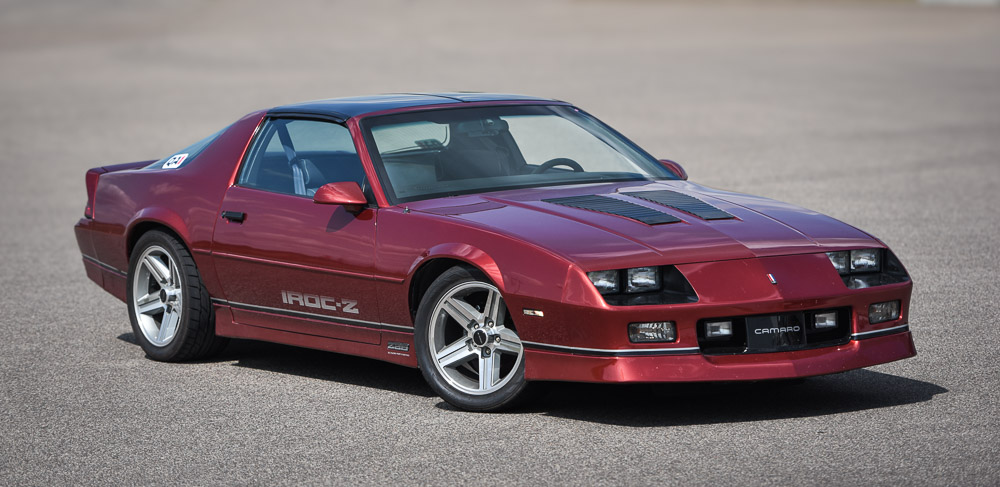
Before selecting a package or components, it’s important to evaluate your use cases and goals to ensure you make the right choice. Here are some key points to consider:
Type of Build: Are you aiming for budget-friendly updates, or a performance-oriented project geared towards or perhaps even dedicated specifically to competitive racing?
Performance Expectations: What are your plans for the car? Consider factors such as handling, ride comfort, and adjustability to match your driving preferences, along with your horsepower and torque expectations. Your horsepower goals are particularly important with a torque arm-style suspension.
Budget: Your project budget is a crucial consideration. If you want to achieve some bolt-on adjustability and replace key components for improved handling, solutions start at less than $1,000. There is interchangeability with OE and QA1 components, allowing customers to use QA1 handling kits as a roadmap for their build over time or fill in gaps with upgraded parts that may already be on the car. For a more extensive overhaul to equip your vehicle with a comprehensive aftermarket suspension system with all the bells and whistles, costs can exceed $8,000.
QA1 has thoughtfully engineered its 3rd gen F-body suspension upgrade kits to meet common goals and the use cases of the owners of these cars, and its inherent design also allows for an upgrade path that you can take when or if your horsepower and torque goals expand.
By considering these factors, you can make an informed decision that best suits your needs.
UPGRADED PERFORMANCE & LOWER RIDE HEIGHT: QA1 LEVEL 1 3RD GEN HANDLING KIT
This kit is perfect for those that are looking for modest performance upgrades to gain better handling for the street or fun outings at track days, and also want to lower the ride height front and rear for a more aggressive stance, without making any major modifications to the vehicle. You’ll also gain adjustability for tuning your compression and rebound (rebound in the front, single-adjust compression and rebound in the rear) to dial your vehicle’s performance for spirited driving.
At this level, you’re likely holding strong with the factory engine or making minor performance upgrades that are within the limitations of the factory transmission tail housing. With this handling kit, the aftermarket tubular torque arm remains married to the factory transmission tail housing and to the GM 10-bolt rear, as it was from the factory. While there are limits to the horsepower you can put to this system, you’re getting a very well-rounded package that will boost your vehicle’s ride and performance front to rear.
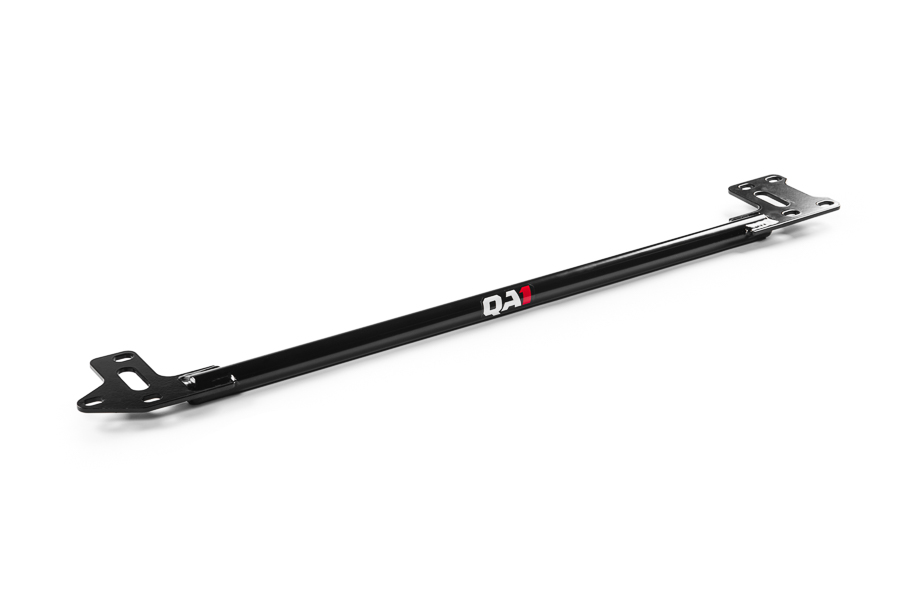
The level 1 handling kit is designed for use with the factory 10-bolt rearend housing.
Stiffen Up Your Chassis: QA1’s tubular Sway Bar, combined with the tubular Wonder Bar, provide a more rigid chassis for a superior ride and handling characteristics, and better response to driver input.
Maximize Traction: QA1’s adjustable torque arm can help optimize weight transfer during acceleration and braking for better vehicle stability and performance, particularly in high-speed driving or competitive racing scenarios. The tubular torque arm and included polyurethane torque arm mount are built to take more power than stock, with the added benefit of adjustability to tune your pinion angle and instant center to optimize operating angles for better power delivery. Additionally, trailing arm relocation brackets allow you to move the vehicle’s instant center to the desired point and correct trailing arm angle on a lowered car to minimize roll steer for better grip and handling.
Adjustable Ride Height: With coilover shocks and struts, you can lower your ride height for a better stance and achieve a more desirable center of gravity for cornering; an adjustable Panhard Bar corrects axle placement in the chassis, which is especially beneficial on lowered cars and/or those with wider than stock tires.
Adjust Pinion Angle & Wheelbase: With an adjustable torque arm, you can fine-tune your pinion angle to save wear and tear on your U-joints and help maximize your traction off the line. The adjustable rear lower trailing arms also allow you to adjust your wheelbase to center up the wheel and tire in the fenders.
Dial In Your Ride: Ditch those non-adjustable factory shocks and struts! QA1 single adjustable shocks and struts give you control over your damping rate to help tune your 3rd gen Camaro or Firebird for the road and the track. This is user-friendly and ideal for those who want to make quick adjustments with a simple turn of the shock body-mounted dial to soften or stiffen your ride quality and improve your handling.
TRACK PERFORMANCE ON THE STREET: LEVEL 2 F-BODY SUSPENSION HANDLING UPGRADES
If you’re looking to increase engine performance — perhaps a built LS engine swap or the addition of power adders — or if a greater degree of road and track performance is your goal, the level 2 F-body suspension handling kit checks all the boxes.
This kit is perfect for those looking to compete in track day and autocross events, that still want to be able to drive the car and take weekend cruises. You’re gaining major handling improvements with a more racey degree of adjustment, and a modern F-body suspension system up front that you can build on as your vehicle’s performance warrants it.
The level 2 kit for the 1982-1992 Camaro and Firebird has been designed to maximize space inboard at the front end to accommodate wider wheels and tires, along with greater clearance for negative camber adjustments (approximately -3 degrees of static camber with QA1 caster camber plates), all for added front grip under hard cornering. The front spring is located in the factory location on the lower control arm, and a unique spring slider efficiently manages the spring location and ride height adjustments. QA1 trailing arm relocation brackets also allow you to move the vehicle’s instant center back up in a lowered handing-focused application improved grip and handling.
This kit is engineered for use with QA1’s 3rd gen F-body lower control arms.
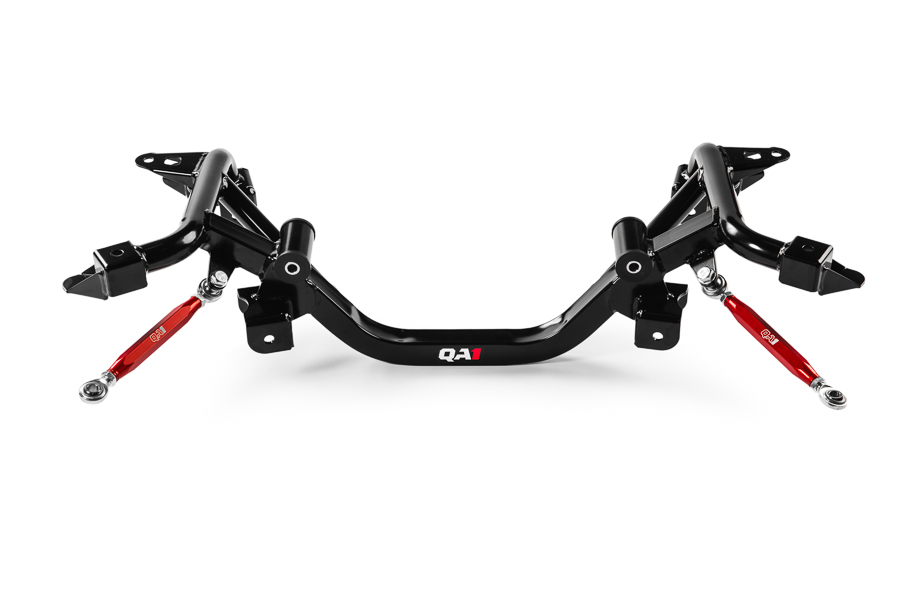
For a more complete suspension system that can accommodate greater horsepower output and stronger 12-bolt housings, consider QA1 transmission crossmember and torque arm assemblies for all popular GM transmissions, many of which do not have a torque arm mounting provision—such as Powerglide, TH400, TH350, and 4L80E—to take the torque arm off of the transmission tail housing.
Generous Wheel & Tire Clearance: The level 2 handling kit introduces a unique spring slider to the front suspension — this slider helps locate the spring and adjust ride height.
Greater Camber Adjustments: With the front spring relocated off the strut, you gain clearance at the body for greater negative camber adjustments to maximize the tire contact patch under hard cornering.
Engine & Transmission Swaps Made Simple: With the QA1 tubular k-member, you can select from a number of interchangeable engine mounts to swap over to a different engine package, so you can grow as you go. Plus, you’ll shed some noticeable weight—more than 30 pounds—over the factory steel k-member. QA1 transmission crossmembers and torque arms allow for simple transmission swaps.
Stiffness Multiplied: Subframe connectors add much-needed stiffness to the F body's unibody frame. As well, a relatively unique trait to the 3rd gen F-body, the kit includes a tubular Wonder bar that spans framerail toframerail and serves as the mounting point for the front sway bar and the steering box,ultimately stiffening the chassis for better handling and responses to driver input. Both of these components add to the rigidity of your chassis, prevent flexing and twisting during aggressive driving, such as cornering, acceleration, and braking, and ensuring your steering input isn’t lost to flex and wasted motion in the suspension.
Adjust Pinion Angle & Wheelbase: Adjustable trailing arms allow you to fine-tune pinion angle by simply changing the length of the trailing arm — this saves wear and tear on your U-joints and helps maximize your traction off the line. You can also adjust your wheelbase to center up the wheel and tire in the fenders.
Reduced Body Roll: Front and rear sway barshelp distribute the load more evenly when cornering, so your car’s tires maintain better contact with the road surface. This improves traction and handling, allowing for more precise steering and better overall control, especially during aggressive driving or sudden maneuvers.
Independent Adjustment of Compression and Rebound: The level 2 kit introduces QA1 double adjustable shocks and struts, allowing separate tuning of the compression (bump) and rebound (extension) damping. This level of control lets you fine-tune the suspension for optimal performance under various driving conditions.
THE ULTIMATE IN 3RD GEN F-BODY PERFORMANCE FOR THE TRACK: QA1’S LEVEL 3 HANDLING KIT
Are you building a serious road and track machine, or a dedicated track-day and autocross racer? QA1’s level 3 handling kit provides everything you’d need for serious competition, including double-adjustable front struts and the top-of-the-line, four-way-adjustable MOD series shocks in the rear. A lightweight k-member reduces nose weight and stiffens the chassis, with engine swaps made easy. At this level, you may be running an aftermarket 12-bolt rearend and an upgraded transmission to take the power and abuse of competitive racing.
Stiffen Your Chassis: Subframe connectors provide essential stiffness to the F body's unibody frame. A relatively unique feature of the 3rd gen F-body is the inclusion of a tubular Wonder bar, which spans from framerail to framerail and serves as the mounting point for the front sway bar and the steering box. This setup ultimately stiffens the chassis, enhancing handling and driver input responsiveness. Both components increase chassis rigidity, preventing flexing and twisting during aggressive driving such as cornering, acceleration, and braking, ensuring that steering input is not lost to flex and wasted motion in the suspension.
Greater Camber Adjustments: Relocating the front spring off the strut provides additional clearance at the body, allowing for more substantial negative camber adjustments. This maximizes the tire contact patch during hard cornering.
Adjust Your Pinion Angle and Wheelbase: Adjustable trailing arms allow you to fine-tune the pinion angle by altering the length of the upper trailing arm, reducing wear on your U-joints and maximizing traction off the line. You can also adjust your wheelbase to perfectly center the wheel and tire within the fenders.
Get Rid of That Pesky Body Roll: Front and rear sway bars evenly distribute the load during cornering, ensuring the tires maintain better road contact. This enhances traction and handling, allowing for more precise steering and improved overall control, especially during aggressive driving or sudden maneuvers.
The Ultimate In Shock Adjustability: QA1 MOD shocks are engineered for the rigorous demands of high-performance pro-touring and track cars that require higher force curves, with four-way adjustability featuring 24 clicks of highspeed compression and rebound, as well as full lowspeed adjustability. Interchangeable modular valve packs enable rapid suspension adjustments, ensuring optimal performance for any driving condition.
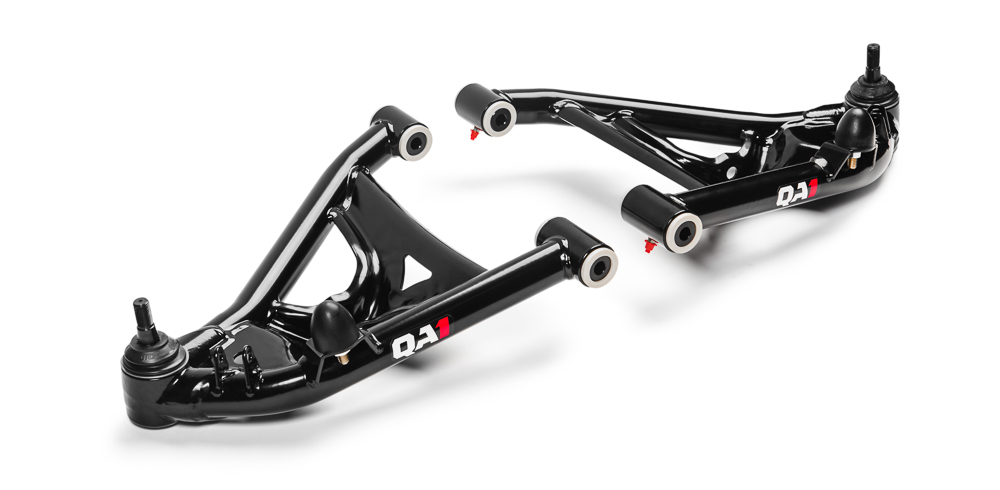
This kit has been designed to exclusively to use QA1’s 3rd gen F-body lower control arms.
At this level, you’re probably taking competition seriously and have upgraded the performance of your 3rd gen Chevy Camaro or Pontiac Firebird. To accommodate greater horsepower output, consider a QA1 transmission crossmember and torque arm assembly to take the torque arm off of the transmission tail housing.
NO COMPROMISES: UPGRADING YOUR FACTORY THIRD-GEN TORQUE ARM
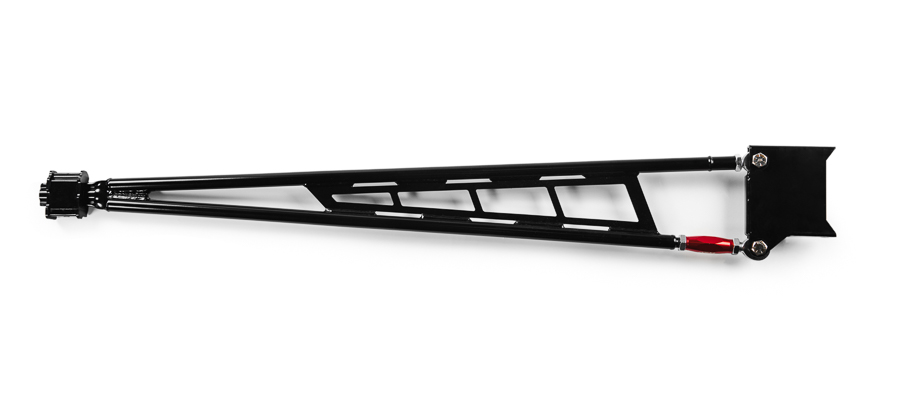
A stiff, high-quality, thoughtfully-engineered torque arm suspension system is highly capable of efficiently and effectively planting horsepower and torque, be it around corners or in a straight line. The factory torque arm, which mounts to the tail housing of the transmission, is widely considered the weak link when increasing engine performance, as the torque arm will literally crack the tail housing — nevermind the potential to bend the factory torque arm itself.
If you’ve increased the power level of your car enough where you need to move the torque arm off the tail housing of the transmission — and there’s a lot of advice out there on this, which is partly dependent on your use case and the kind of traction you’re typically getting — then a beefier, aftermarket torque arm and a dedicated transmission crossmember to tie it into will give you greater performance and peace of mind.
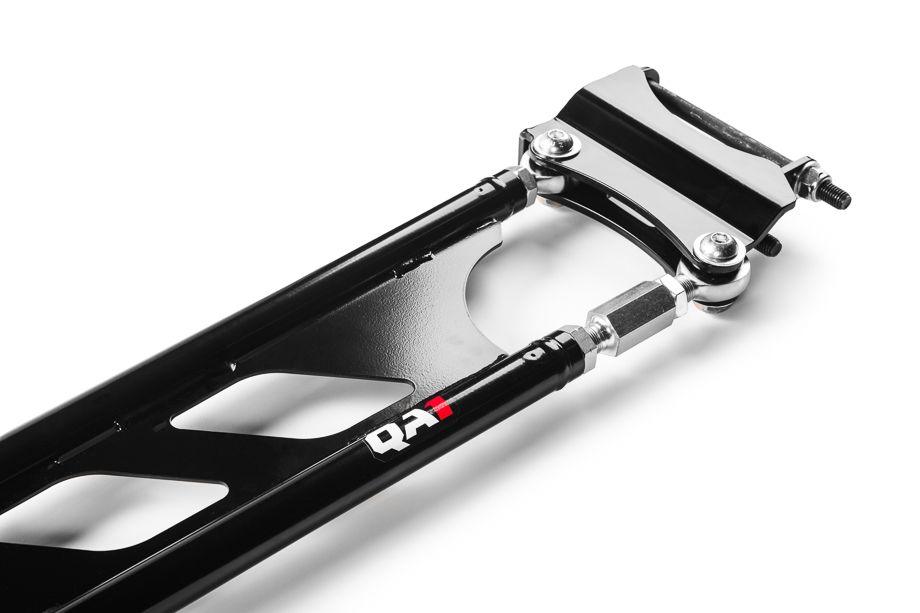
With so many combinations of transmission and rearend housings, the QA1 torque arm offerings are sold separately from the handling and drag racing kits so that you can upgrade as you go, with just the right components for your driveline package. So, if you want to take your factory suspension system or your QA1 3rdgen handling or drag racing kit to the next level and open up your performance window, QA1’s tubular torque arms are designed to pair with your stock 10-bolt GM rear differential or aftermarket Moser S60 12-bolts.
Six different transmission crossmembers are available for these torque arms, including those for:
- 700R4/4L60/T5
- TH350/Powerglide
- 4L60E
- TH400
- T56
- 4L80E
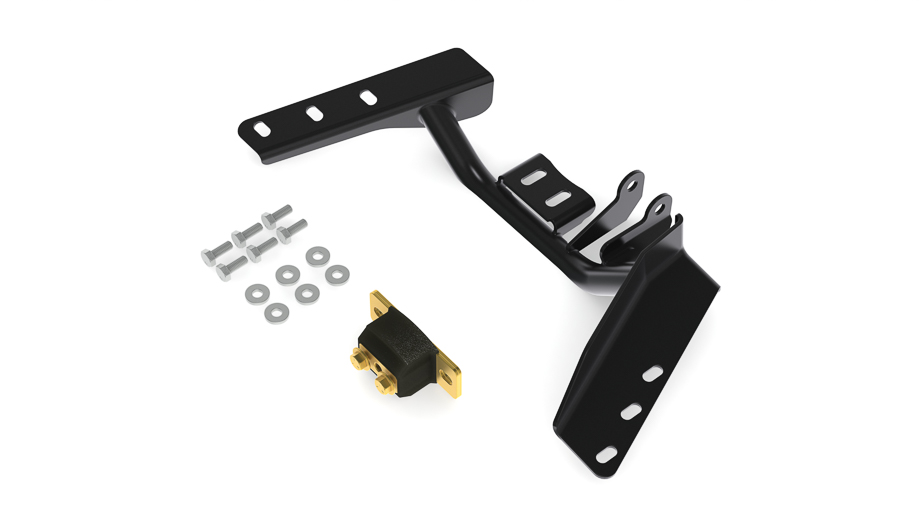
SHOP TRANSMISSION CROSSMEMBERS
When upgrading your transmission crossmember and torque arm, you’ll also want to pair them with the correct driveshaft loop. QA1’s 3rd gen F-body loops include those for:
- 700R4/4L60/T5/TH350/PG/4L60E
- TH400/4L80E
- T56
